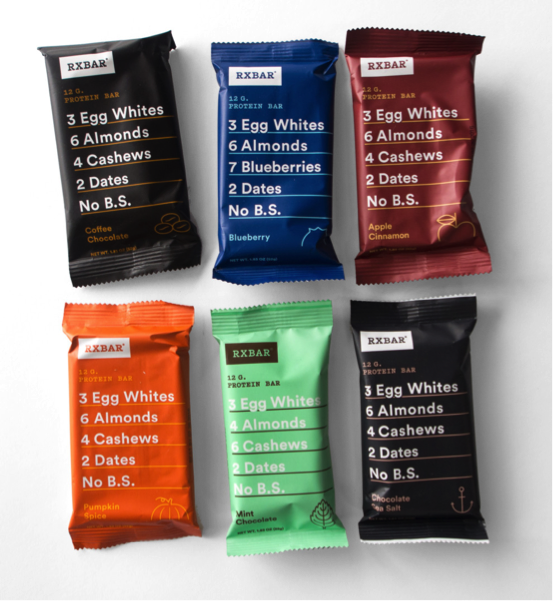BY: MACKENZIE HANNUM
What does “clean label” even mean? Do consumers know? Does the food industry know? Mr. Clean, the King of Clean…does he even know? The answer is no. No one knows. There is no official definition of a “clean label” yet this is one of the largest trends in the food industry. Consumers are demanding it; companies are producing it.

http://giphy.com/gifs/commercial-ad-super-bowl-l3q2yIR6kTpksDuw0
One way to examine the trend, and maybe extrapolate a definition, is to take a step back and see where it originated. It is hard to pinpoint when it started but most food industry professionals can agree that there was a great shift in consumer perception of food products. All of a sudden, people began to question what they were consuming and contemplate what they were placing in their bodies. The public then turned to the food industry for answers. Unfortunately, in an attempt to safeguard trade secrets, the food industry failed to be answer the publics probing questions. This created a “gap” in transparent knowledge about the food supply, which planted the seed of mistrust in consumers’ minds. Social media and news outlets proceeded to fill the gap between industry and consumers, becoming the “go-to” source for facts about food.

https://imgflip.com/i/ycgt7
The food industry eventually realized it’s mistake, and took action to give consumers the transparency they desired. Companies hit the ground running, and started to formulate products specifically to address consumers’ concerns. Thus, the food industry became less like Mr. Burns (i.e. the stereotypical money driven, business promoting corporate mogul) from the sitcom “Simpsons”, and more focused on making a product that was relatable and simple for consumers to understand. And so, the idea of “clean labels” was born.

https://qz.com/494989/todays-buzziest-cars-are-more-fuel-efficient-but-theyre-not-what-americans-are-really-buying/
For the purpose of this post we will define clean label as having an ingredient statement that is easy to comprehend to the average consumer, using familiar ingredients. Ingredion, a global company that sells ingredients such as sweeteners, starches and other nutritional ingredients to other companies released a report that investigated change in consumer opinion and the clean label trend. In 2013, 77% of European consumers considered the ingredient list to be most important when purchasing a food product compared to 53% who reported the brand was more important (n=2805) [1].
Fast food companies are following suit, changing their marketing platform to promote this clean label trend through reformulation using simple ingredients —items consumers can comprehend and find in their own pantry. Some snack bars are even highlighting these ingredients front-and-center as the main focus on the label. Why? Because consumers are seeking assurance about the safety and naturalness of the products they are consuming.

http://chrisglass.com/album/wp-content/uploads/2016/02/0203-rxbar-flavors-990×1076.jpg
As a budding food scientist I struggle internally with the concept of “clean label”. The trend arose from a basic lack of understanding. As a kid if I ever did not understand something my Pa would just hand me the dictionary, forcing me to figure it out on my own. And now with the internet, the wealth of information at our fingertips is astounding. So why haven’t people looked it up? Why didn’t consumers look up an unfamiliar ingredient on their phone when they were interested in purchasing a product? Our phones are right there; the information is seconds away from us.
What changed? Why is the industry bending its back to reformulate products and simplify labels? Why didn’t we try to open a dialogue and educate consumers? I believe the industry has more to do. It is our responsibility to be more transparent and effectively communicate with our consumers. Additionally, it is our duty to educate them on what they are consuming by making information more readily available and reassuring them that quality and safety are our top priorities in developing ethical products.

http://www.thescientificparent.org/tag/food/page/2/
My main issue with this movement is that food scientists are perpetuating the negative outlook on “unclean” ingredients (i.e. those that are difficult to pronounce or unfamiliar to the consumer). By following the trend and removing ingredients that are perceived as “unclean”, we are essentially confirming that they had no prior function perpetuating the notion that they are unfit for human consumption. In reality companies are not changing their products because ingredients are unsafe or unhealthy for consumers. Rather, they seek to regain consumer trust by producing food consumers feel comfortable eating.
Moving forward, it is important for food scientists and the food industry to proceed with caution. We need to fill the consumer need but also work to educate and communicate in a relatable way. The bottom line is the work we do is never to trick consumers but rather enhance the consumer experience by creating tasty and nutritive products. There is a lot of work to be done but we can do it, one ingredient statement at a time.
References
[1] The Clean Label Guide to Europe. Ingredion.






Very nice article on thank you for sharing keep sharing
Very nice article on thank you for sharing keep sharing.